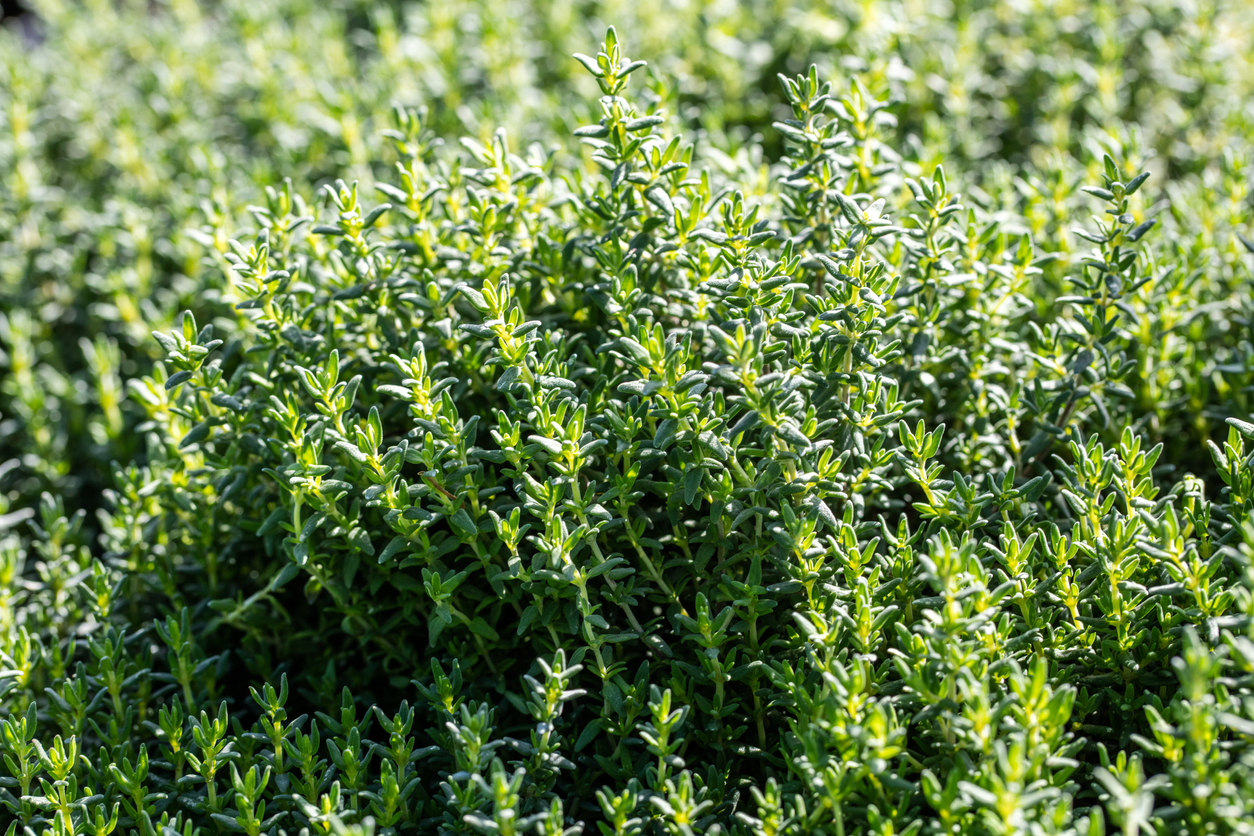Rosemary & Thyme: A Culinary Herb Guide

Table of Contents
Understanding Rosemary
Rosemary ( Salvia rosmarinus) is a woody, evergreen shrub with needle-like leaves and a distinctive, piney aroma. Originating in the Mediterranean region, this hardy plant thrives in sunny, well-drained soil. Its intense flavor and captivating fragrance make it a culinary staple.
- Types of Rosemary: Rosemary comes in various forms, each with subtle differences in growth habit and flavor intensity. Upright rosemary is the most common, growing tall and bushy, while prostrate rosemary spreads horizontally, ideal for ground cover or hanging baskets.
- Rosemary Benefits: Beyond its culinary appeal, rosemary offers a range of health benefits. It's a potent antioxidant, rich in beneficial compounds that combat free radicals. Some studies even suggest rosemary may improve memory and cognitive function.
- Culinary Applications: Rosemary's robust flavor pairs exceptionally well with roasted meats, particularly lamb and chicken. It adds a delightful touch to soups, stews, and even breads. Adding a sprig to your roasting pan infuses the meat with a rich, earthy flavor.
- Growing and Storing Fresh Rosemary: Rosemary is relatively easy to grow, either in pots or directly in the ground. Harvest sprigs as needed, and store fresh rosemary in a damp paper towel in a plastic bag in the refrigerator for up to a week. You can also freeze fresh rosemary for longer storage.
Exploring Thyme's Culinary Delights
Thyme (Thymus vulgaris), a member of the mint family, is known for its subtly lemony and slightly peppery flavor. This low-growing, spreading herb offers a delightful contrast to rosemary's stronger profile.
- Thyme Varieties: Several thyme varieties exist, each imparting unique nuances to dishes. Lemon thyme, as its name suggests, offers a bright citrusy note, while English thyme provides a classic, earthy flavor. Creeping thyme is a ground cover variety, perfect for gardens.
- Thyme Benefits: Thyme boasts impressive health benefits, possessing potent antibacterial and antifungal properties. It's often used in traditional medicine for its soothing and immune-boosting qualities.
- Culinary Uses: Thyme is a versatile herb, adding a delicate touch to stews, sauces, and poultry dishes. It's an essential ingredient in many classic herb blends and pairs well with root vegetables and mushrooms. Adding thyme to a marinade elevates the flavor of your meats.
- Growing and Storing Fresh Thyme: Similar to rosemary, thyme thrives in sunny locations. Harvest sprigs regularly to encourage bushier growth. Store fresh thyme similarly to rosemary, wrapped in a damp paper towel in a plastic bag in the refrigerator.
Rosemary and Thyme in Recipes
The true magic of rosemary and thyme lies in their versatility and ability to complement each other beautifully. Their combined flavors create a depth and complexity unmatched by either herb alone.
- Roasted Chicken with Rosemary and Thyme: Simply rub a whole chicken with olive oil, salt, pepper, and generous sprigs of rosemary and thyme. Roast until golden brown and cooked through. The aroma alone is enough to make your mouth water!
- Hearty Rosemary and Thyme Soup: Add chopped rosemary and thyme to your favorite vegetable or lentil soup during the last 15 minutes of cooking. The herbs will infuse the soup with a delightful savory depth.
- Rosemary and Thyme Bread: Incorporate finely chopped rosemary and thyme into your favorite bread recipe for a fragrant and flavorful twist.
- Effective Herb Combinations: For optimal flavor, use rosemary and thyme together in a ratio of roughly 2:1 (more rosemary than thyme), as rosemary’s stronger flavor can sometimes overpower thyme’s delicate notes.
Fresh vs. Dried Rosemary and Thyme
Both fresh and dried rosemary and thyme offer unique qualities. Fresh herbs possess a more vibrant and intense flavor, while dried herbs are more concentrated and convenient for storage.
- Flavor Intensity: Fresh herbs generally have a brighter, more nuanced flavor than dried herbs. Dried herbs are more concentrated, so you'll need to use less.
- Herb Storage: Store fresh herbs properly as mentioned above. Dried herbs should be stored in airtight containers in a cool, dark, and dry place to maintain their flavor and aroma.
- Recipe Considerations: Fresh herbs are best used in dishes where their delicate flavors can shine, such as in salads, pesto, or as a garnish. Dried herbs are ideal for long-cooking dishes like stews or sauces, where their flavor can develop fully.
Conclusion
Rosemary and thyme, with their distinct flavors, aromas, and impressive health benefits, offer endless possibilities in the culinary world. Whether you're a seasoned chef or a home cook, these herbs are an essential addition to your spice rack. Choosing high-quality, fresh or dried herbs is crucial for achieving the best flavor in your dishes. Start experimenting with rosemary and thyme today! Explore the world of rosemary and thyme recipes now and discover the fragrant magic these herbs can bring to your culinary adventures. Visit your local farmers market or herb garden to find the freshest rosemary and thyme to elevate your next meal!

Featured Posts
-
 8 Crepes Salados Rellenos Ideas Originales Para Merienda O Cena
May 31, 2025
8 Crepes Salados Rellenos Ideas Originales Para Merienda O Cena
May 31, 2025 -
 Una Receta Aragonesa De 3 Ingredientes Un Plato Del Siglo Xix
May 31, 2025
Una Receta Aragonesa De 3 Ingredientes Un Plato Del Siglo Xix
May 31, 2025 -
 Is Vancouvers Immersive Banksy Exhibit Worth The Hype
May 31, 2025
Is Vancouvers Immersive Banksy Exhibit Worth The Hype
May 31, 2025 -
 Remembering Prince March 26th And The Impact Of His Death
May 31, 2025
Remembering Prince March 26th And The Impact Of His Death
May 31, 2025 -
 Wildfire Betting Exploring The Ethics And Risks Of Wagering On Natural Disasters Los Angeles Case Study
May 31, 2025
Wildfire Betting Exploring The Ethics And Risks Of Wagering On Natural Disasters Los Angeles Case Study
May 31, 2025
